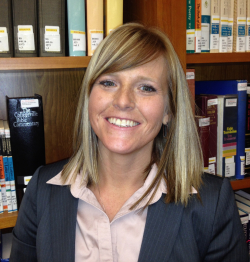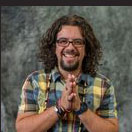faculty development
Select an item by clicking its checkbox

Leave Your Attitude at the Door: Dispositions and Field Experiences in Education
Date Reviewed: September 13, 2017
If a title reflects a book’s content, then this work is a particularly good case in point. The authors consistently refer to various real-life examples from the sphere of education in order to highlight the importance of attitudes and dispositions. While thus staying true to the book’s title, the authors additionally share pieces of wisdom from the field informed by years of experience.
Education is a service industry. Educators and trainees are called to serve and not to be served. While this may seem like commonsense, the authors remind readers that commonsense is not all that common and the problem of entitlement is not as uncommon as one would like it to be (26). In this light, the authors make the case for the assessment of dispositions along with accompanying narratives that will address the issue in a professional and timely manner (38). While offering critical feedback, however, coordinators and instructors are simultaneously encouraged to keep in mind the need for reassurance, support, and empathy for students who are teacher candidates.
The book is filled with humor, allowing readers to let their guards down a little and see the need for inculcating professionalism in work settings. The authors narrate accounts of students in training who cite seemingly legitimate reasons for absences only to be caught – thanks to social media – going on cruises. The authors offer other cases, such as those who try to outmaneuver school buses pulling out of parking lots just to get ahead. Then, believe it or not, are those who speak inappropriately to students, including saying, “You don’t like my jacket? Well, your momma liked it last night” (42).
Working with future educators, the authors argue rightly, necessitates being proactive. While entitlement and lack of professionalism are matters of utmost concern when working with teacher candidates who are adults, these very adults also have particular lives that bring up questions of shelter, work-school balance, adequate food, parenting and other familial responsibilities. “Can you be proactive? Yes! Should you be proactive? Yes! Does it take time? Yes! Does it take work? Yes! Is it worth it? Absolutely!” (47). Through such series of questions and responses, the book presents a wealth of material in a readily accessible manner to teacher educators.
Educators are warned that perfectionism may come at the cost of unsustainable superficiality. Reminding educators that “we are they,” the authors note that “what we create together will ultimately serve our students, schools, and communities” (55). The emphasis on creating together means that authentic, professional, and healthy relationships and partnerships are acknowledged as being at the heart of a successful field education experience (55). Such relationships and partnerships need constant tending and care, much like a garden (54-55).
As readers make their way through the book, a realization soon emerges. Transcending the this-is-my-obligation attitude in order to come to a place where “we make promises and keep them” (59) is key. Commitment, talent, and care for the educational setting are tested by problems, dispositions, and attitudes (77). Anyone interested in navigating these realities would benefit from engaging this work.
The blizzard of the world has crossed the threshold and it has overturned the order of the soul. -Leonard Cohen[1] I still remember vividly the fear and frenzy swirling around my graduate school the days and weeks after September 11, 2001. As the blizzard of physical and spiritual violence and their inevitable ...
Like many teachers, I was trained to expect student’s participation in the classroom to be many things at once: prepared, right on the issue at stake, ready to offer deep insights and if possible, be passionate. I also was trained to exclude the needs and subjective experiences of my ...

Envisioning the Faculty for the Twenty-First Century: Moving to a Mission-Oriented and Learner-Centered Model
Date Reviewed: November 30, -0001
What functions occupy your time as an academic? Are they equally respected, sensibly arranged, and fairly evaluated? Are they well-coordinated with the mission of your institution? Do they complement the functions your colleagues carry out? Do they all contribute to student learning? If you have ever wondered about such questions, you must read this book.
Adrianna Kezar and David Maxey, of the Delphi Project on the Changing Faculty and Student Success, gathered a distinguished group of contributors to produce this volume on the future role of faculty in U.S. higher education. They start by pairing two concerns often considered separately despite their proven interconnection: the erosion in recent decades of the traditional faculty model (the full-time, tenured or tenure-track faculty member), and student success. The unbundling of faculty roles, and the consequent re-distribution to assorted academic personnel, of curriculum development, course design, content delivery, assessment, advising, research, community engagement, and so forth—has negatively affected faculty-student interactions and therefore student learning and self-efficacy. Adjunct faculty members are not the problem. Even the disappearance of tenure is not the problem. The problem has been the random, reactive, and poorly conceived responses to market forces and technological revolutions in education.
The volume goes on to raise many other concerns that changes to the faculty have effected, including: an evolving understanding of academic freedom based less on individual rights and more on collective responsibility, the way that internationalization of higher education and a global academic workforce challenge assumptions about U.S. supremacy, the need to base faculty evaluations on the success of the department as well as individual achievement, a shift in faculty development programs from mere technology training toward adult learning, and the pros and cons of customizing academic careers to support work-life balance. Contributors do not uncritically valorize the traditional faculty model; while they generally support the return to more full-time positions, they also recognize the need for flexibility and coordination in the design of faculty roles, alignment of those roles with institutional priorities, and collaboration rather than competition among communities of scholars. One specific innovation lifted up as noteworthy is the way medical schools have created multiple tracks (investigator, clinical-educator, clinical, research, and educator) that provide distinct but parallel career pathways for their faculty while simultaneously serving their institutional needs.
Though the book does not conclude with a fully envisioned alternative model for the 21st century, several points of consensus do emerge, especially around the need for collegiality, professionalism, responsibility for students, differentiation and diversification of roles, and more expansive definitions of research and scholarship.
This collaboration is a rare and refreshing example of one to which the contributions are evenly strong. Every chapter piqued my interest. Readers of this journal may especially appreciate the chapter on academic freedom because it is written by a religion scholar and has a familiar ring.
Readers new to the literature on developments in higher education might first want to read Ernest Boyer’s 1990 Scholarship Reconsidered, referenced frequently by contributors. Envisioning the Faculty for the 21st Century will become an equally important and influential work.
Works Cited
Boyer, Ernest L., author. Drew Moser, Todd C. Ream, and John M. Braxton, editors. 2016 expanded edition. Scholarship Reconsidered: Priorities of the Professoriate. San Francisco: Jossey-Bass.

An Evidence-based Guide to College and University Teaching Developing the Model Teacher
Date Reviewed: January 30, 2017
Chapters one ...
Richmond, Boysen, and Gurung’s work provides a much-needed resource for new teachers and is valuable to experienced teachers as well. The text is both concise and comprehensive concerning the current state of the Scholarship of Teaching and Learning (SoTL). The authors are psychologists who include their disciplinary insights, as well as provide important examples and resources from disciplines in the sciences, social sciences, and humanities.
Chapters one and two set up the context of the “model teacher.” Rather than providing an essentialist answer to the definition of the model teacher, the authors focus on behaviors that produce consistent ideal results in the classroom.
Chapters three through five – focused on teacher training, instructional methods, and student learning respectively – are useful to new teachers. As a text for initiating teachers, these chapters provide a reliable systematic introduction to key ways in which teachers interact with students in the classroom. These chapters should be complemented with discipline-specific examples or readings in graduate school teaching programs.
Chapters six and seven on assessment of student learning and syllabus construction are the most valuable to teachers at any stage in their career. The insights into the scholarship on assessment is invaluable for the development of class, departmental, and university-wide curriculum. These two chapters are the most practical chapters for reconsidering the significance and purpose of teaching strategies and assignments.
Finally, chapter eight examines student evaluations. There are many important insights in this chapter for new teachers on how to engage meaningfully with student summative evaluations. One point of interest was the authors’ statement on the significance of student satisfaction with a course. The authors could have included a lengthier conversation on how to meaningfully address the question of student satisfaction.
In the end, “evidence-based” means that one organizes the multiple resources we employ in higher education in a way that substantiates the claims we wish to make. This text provides concrete advice that is useful for the novice; it is also a helpful aid for anyone wishing to mentor others in the art of teaching.
An Evidence-based Guide to College and University Teaching employs an engaging hypothetical dialogue with the reader and an interactive approach. There are self-assessments at the beginning and end of each chapter along with hypothetical case studies for each chapter. An appendix at the end presents the uninterrupted self-assessment scale on sixty-four criteria for model teachers. These elements are excellent resources for group discussion in graduate seminars or faculty retreats.
This book presents an accessible synthesis of the SoTL literature. It is successful as a gateway resource to the dialogue from the last forty years on pedagogical best practices. The text is limited in terms of the depth that it covers given the myriad topics it addresses, but it provides a solid beginning to engage the conversation.

